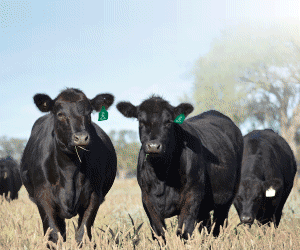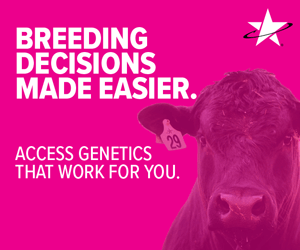Mature cow udder scores assess the structural soundness of the udder on mature females, and are measured as visual scores.
Mature cow udder score data does not need to be collected by an accredited scorer.
Recording mature cow udder scores
Mature cow udder scores are collected for 3 traits, related to udder conformation based on the visual appearance of the animal.
Each trait uses a 1-9 scoring system, where:
- A score of 5 is considered ideal
- Scores of 4 and 6 show slight variation from ideal, but this includes most animals. Any animal scoring 4 and 6 would be acceptable in any breeding program
- Scores of 3 and 7 show greater variation, but would be acceptable in most commercial breeding programs, however seedstock producers should be wary
- Scores of 2 and 8 are low scoring animals and should be looked at carefully before purchasing
- Scores of 1 and 9 should be considered culls
If there is variation from teat to teat, the score that is recorded should reflect the worst teat.
Use of accredited technicians
Both breeder collected scores and scores collected by accredited technicians are analysed in TACE.
It is suggested that independent accredited assessors are used for the collection of scores on sale animals, or in situations where the breeder is not confident with scoring their animals.
If being collected by a non accredited scorer than the assessor code 9999 is to be used for submission. For accredited scorers , the relevant accredited assessor number should be used.
A “Paddock Guide to Structural Scoring for Genetic Evaluation” is available from Angus Australia to assist any breeders wishing to collect structural scores for their animals.
When should mature cow scores be collected?
Udder scores can be taken throughout the year, however they must be withing 24 – 48 hours from calving.
- It is important that there is some variation in the scores that are collected. Scoring all the animals in a group with the same score for a trait does not identify any differences in structure between animals, and consequently does not provide any useful information.
- Management group information should be recorded for any cows or group of cows that have been treated differently or exposed to significant non-genetic influences prior to scoring that may affect their score for a trait.
Click here to print
Angus Australia acknowledges the funds provided by the Australian Government through the Meat & Livestock Australia Donor Company (MDC).
This resource was created as a result of a collaboration between Angus Australia and Meat & Livestock Australia Donor Company (MDC) (Project P.PSH.1063).









